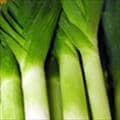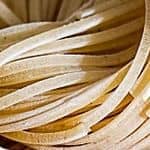10 Low Electrolyte Foods for People with Chronic Kidney Disease

Electrolytes are essential nutrients necessary for maintaining a proper balance of hydration and pH in the body. (1) However, for those diagnosed with chronic kidney disease, limiting some or all electrolytes may be necessary. (2)
Electrolytes for the body include sodium (NA), potassium (K), calcium (CA), magnesium (MG), phosphorus (P), and chloride (CL). (1) Sodium and chloride constitute table salt and therefore are widely found in modern diets.
Foods low in electrolytes include refined oils, honey, certain boiled and drained vegetables, low mineral water, certain fruits, and for protein: egg whites. (3) Below are 10 foods low in electrolytes. For more, see the articles on low potassium foods, and low phosphorus foods.
Foods Low in Electrolytes

Sodium: 0mg (0% DV)
Potassium: 0mg (0% DV)
Magnesium: 0mg (0% DV)
Calcium: 0mg (0% DV)
Phosphorus: 0mg (0% DV)

Sodium: 1mg (0% DV)
Potassium: 11mg (0% DV)
Magnesium: 0mg (0% DV)
Calcium: 1mg (0% DV)
Phosphorus: 1mg (0% DV)

Sodium: 12mg (1% DV)
Potassium: 108mg (2% DV)
Magnesium: 17mg (4% DV)
Calcium: 37mg (3% DV)
Phosphorus: 21mg (2% DV)

Sodium: 5mg (0% DV)
Potassium: 0mg (0% DV)
Magnesium: 5mg (1% DV)
Calcium: 24mg (2% DV)
Phosphorus: 0mg (0% DV)

Sodium: 55mg (2% DV)
Potassium: 54mg (1% DV)
Magnesium: 4mg (1% DV)
Calcium: 2mg (0% DV)
Phosphorus: 5mg (0% DV)

Sodium: 1mg (0% DV)
Potassium: 114mg (2% DV)
Magnesium: 9mg (2% DV)
Calcium: 9mg (1% DV)
Phosphorus: 18mg (1% DV)

Sodium: 12mg (1% DV)
Potassium: 95mg (2% DV)
Magnesium: 9mg (2% DV)
Calcium: 32mg (2% DV)
Phosphorus: 21mg (2% DV)

Sodium: 2mg (0% DV)
Potassium: 55mg (1% DV)
Magnesium: 19mg (5% DV)
Calcium: 16mg (1% DV)
Phosphorus: 68mg (5% DV)

Sodium: 1mg (0% DV)
Potassium: 134mg (3% DV)
Magnesium: 6mg (1% DV)
Calcium: 8mg (1% DV)
Phosphorus: 14mg (1% DV)

Sodium: 5mg (0% DV)
Potassium: 112mg (2% DV)
Magnesium: 63mg (15% DV)
Calcium: 15mg (1% DV)
Phosphorus: 149mg (12% DV)
About the Data
Data for the curated food lists comes from the USDA Food Data Central Repository.
You can check our data against the USDA by clicking the (Source) link at the bottom of each food listing.
Note: When checking data please be sure the serving sizes are the same. In the rare case you find any difference, please contact us and we will fix it right away.
Related
Data Sources and References
Try the recipe nutrition calculator, or daily meal planner.
Create a free account to log and track foods.
